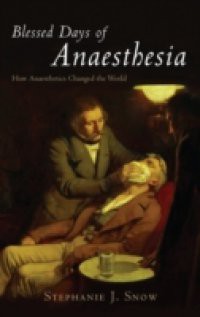Among all the great discoveries and inventions of the nineteenth century, few offer us a more fascinating insight into Victorian society than the discovery of anaesthesia. Now considered to be one of the greatest inventions for humanity since the printing press, anaesthesia offered pain-free operations, childbirth with reduced suffering, and instant access to the world beyond consciousness. And yet, upon its introduction, Victorian medics, moralists, clergymen, andscientists, were plunged into turmoil. This vivid and engaging account of the early days of anaesthesia unravels some key moments in medical history: from Humphry Davy's early experiments with nitrous oxide and the dramas that drove the discovery of ether anaesthesia in America, to the outrage provoked by Queen Victoria's use of chloroform during the birth of Prince Leopold. And there are grisly ones too: frequent deaths, and even notorious murders. Interweaved throughout the story, a fascinating social change is revealed. For anaesthesia caused the Victorians to rethink concepts of pain, sexuality, and the links between mind and body. From this turmoil, a profound change in attitudes began to be realised, as the view that physical suffering could, and should, be prevented permeated through society, most tellingly at first in prisons and schools where pain was used as a method of social control. In this way, the discovery of anaesthesialeft not only a medical and scientific legacy that changed the world, but a compassionate one too.





 1 (1)
1 (1) 











